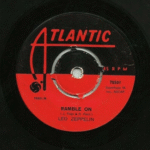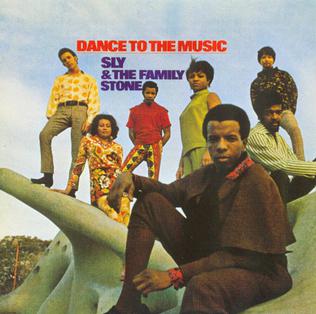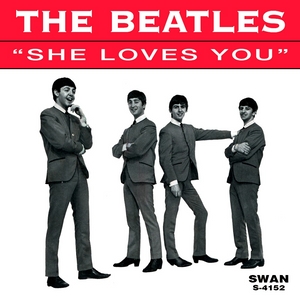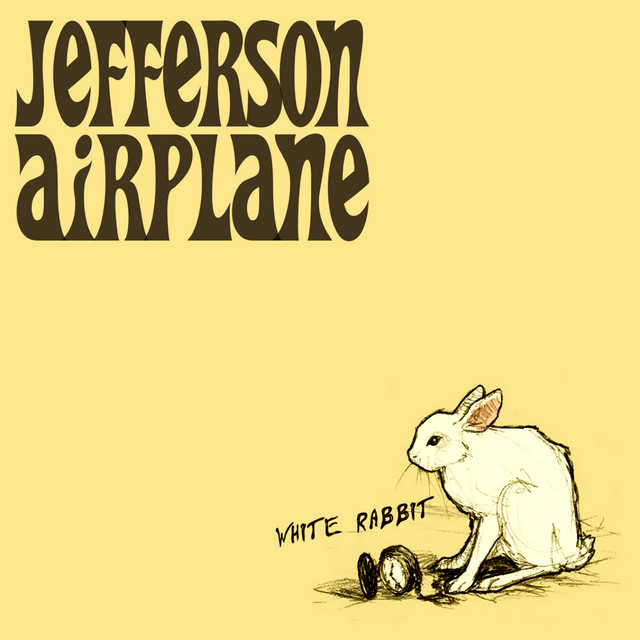 Few songs capture the spirit of adventure, longing, and mythic storytelling as perfectly as Led Zeppelin’s “Ramble On.” Released in 1969 as part of their critically acclaimed album Led Zeppelin II, the song showcases the band’s ability to blend hard rock, folk influences, and lyrical storytelling into a cohesive, unforgettable experience. With Robert Plant’s ethereal vocals, Jimmy Page’s intricate guitar work, John Paul Jones’ melodic bass, and John Bonham’s dynamic drumming, “Ramble On” exemplifies Led Zeppelin at their most exploratory and inventive.
Few songs capture the spirit of adventure, longing, and mythic storytelling as perfectly as Led Zeppelin’s “Ramble On.” Released in 1969 as part of their critically acclaimed album Led Zeppelin II, the song showcases the band’s ability to blend hard rock, folk influences, and lyrical storytelling into a cohesive, unforgettable experience. With Robert Plant’s ethereal vocals, Jimmy Page’s intricate guitar work, John Paul Jones’ melodic bass, and John Bonham’s dynamic drumming, “Ramble On” exemplifies Led Zeppelin at their most exploratory and inventive.
While often celebrated for its musical complexity and narrative lyricism, “Ramble On” is also a reflection of its era: a time when rock music was expanding beyond traditional boundaries, drawing inspiration from literature, folklore, and personal journeys. This article explores the song’s creation, musical composition, lyrical themes, cultural context, reception, and enduring legacy, illuminating why “Ramble On” remains one of Led Zeppelin’s most iconic works.
The Origins of Ramble On
By 1969, Led Zeppelin had already made a significant impact on the rock scene with their debut album Led Zeppelin (1969). The band’s innovative combination of blues, hard rock, and folk influences, along with their virtuosic musicianship, set them apart from their contemporaries. For Led Zeppelin II, recorded during a grueling tour schedule in early 1969, the group sought to continue pushing musical boundaries while experimenting with new lyrical and thematic content.
“Ramble On” emerged from this period of creative exploration. Guitarist Jimmy Page and vocalist Robert Plant, the primary songwriters, drew inspiration from folk traditions, American blues, and literature. The song’s lyrics, infused with references to J.R.R. Tolkien’s The Lord of the Rings, reflect Plant’s fascination with myth and storytelling, blending personal experiences with epic narratives. The title itself, “Ramble On”, evokes a sense of movement and wandering, setting the thematic tone for the song.
Musical Composition: A Fusion of Hard Rock and Folk
“Ramble On” is notable for its seamless fusion of musical styles, demonstrating Led Zeppelin’s ability to integrate folk, hard rock, and psychedelic influences into a single composition. The song opens with a delicate, arpeggiated guitar riff by Jimmy Page, accompanied by John Paul Jones’ soft bass and understated percussion from John Bonham. This intro establishes a reflective, almost pastoral atmosphere, inviting the listener into the journey of the song.
As the verses progress, Robert Plant’s vocals enter, ethereal and melodic, conveying both intimacy and grandeur. His phrasing balances storytelling with musicality, allowing the lyrics to breathe while maintaining the song’s rhythmic drive. The chorus, with its repeated line “Ramble on, now, sing my song”, introduces a sense of urgency and momentum, reflecting the wanderlust implied by the title.
Musically, the song shifts between gentle acoustic sections and more driving, electric segments. Around the midpoint, Page’s guitar transitions into a heavier riff, accompanied by Bonham’s assertive drumming, adding intensity and texture. This dynamic contrast between soft and hard sections is a hallmark of Led Zeppelin’s style, allowing them to convey a range of emotions within a single track.
Page’s guitar work on “Ramble On” is particularly noteworthy for its melodic sophistication. The interplay between acoustic fingerpicking and electric lead lines creates a layered soundscape that supports the song’s narrative journey. Jones’ bass lines are equally important, providing harmonic depth and rhythmic stability while subtly enhancing the song’s folk-rock character. Bonham’s drumming, restrained yet precise, anchors the composition, giving the song momentum without overwhelming its melodic elements.
Lyrics: Myth, Romance, and the Wanderer’s Journey
One of the defining features of “Ramble On” is its lyrical content. Robert Plant weaves a narrative that combines personal reflection with references to myth and literature. The song opens with the lines:
“Leaves are falling all around
It’s time I was on my way
Thanks to you, I’m much obliged
For such a pleasant stay”
These lines establish the theme of departure and transition, evoking the bittersweet emotions associated with leaving a familiar place. The narrator acknowledges gratitude while simultaneously expressing the urge to move forward, a tension central to the concept of rambling or wandering.
The song’s references to Tolkien’s work further enhance its mythic quality. Lines such as “In the darkest depths of Mordor
I met a girl so fair” intertwine the fantasy world of Middle-earth with the personal narrative of love and desire. This blending of the fantastical and the real allows Plant to explore universal themes of longing, adventure, and the search for meaning, making the song both epic and intimate.
The chorus—“Ramble on, now, sing my song
I’m going to lose my mind
Wandering in the world”—captures the restless spirit of the song. The repetition of “ramble on” functions as both a refrain and a mantra, emphasizing the narrator’s commitment to movement, exploration, and personal growth. Unlike traditional love songs or ballads, “Ramble On” frames life itself as a journey, with love, loss, and self-discovery intertwined.
Plant’s lyrics also reflect the countercultural ethos of the late 1960s. The song celebrates freedom, autonomy, and the rejection of societal constraints, themes that resonated with a generation seeking liberation from conventional norms. The blend of personal, literary, and mythical references creates a rich tapestry that invites multiple interpretations, ensuring that “Ramble On” rewards repeated listening.
Cultural Context: Rock, Myth, and the Late 1960s
“Ramble On” was released during a period of intense experimentation and expansion in rock music. The late 1960s saw artists blending blues, folk, psychedelia, and hard rock, creating a fertile environment for innovation. Led Zeppelin, emerging from this milieu, pushed the boundaries of what rock music could express, both musically and thematically.
The song’s use of literary references, particularly to Tolkien, reflects a broader trend among rock musicians to incorporate elements of mythology, fantasy, and literature into their work. This trend was part of a larger cultural fascination with exploration, adventure, and alternative modes of consciousness. “Ramble On”, with its combination of storytelling and musical complexity, epitomizes this fusion of artistic influences.
At the same time, the song reflects Led Zeppelin’s commitment to virtuosity and innovation. The seamless integration of acoustic and electric instrumentation, dynamic contrasts, and melodic sophistication exemplify the band’s ability to elevate rock music beyond simple structures, transforming it into a vehicle for narrative and emotional depth.
Reception and Critical Acclaim
Upon release, “Ramble On” received praise from critics for its musical sophistication, lyrical depth, and dynamic production. Led Zeppelin II was widely regarded as a breakthrough album, and “Ramble On” was singled out as a highlight for its melodic richness and narrative ambition. While not released as a single in the United States, the song received considerable airplay on FM radio, further enhancing the band’s growing reputation.
Over time, “Ramble On” has been recognized as one of Led Zeppelin’s most enduring works. Critics and fans alike celebrate its combination of folk-inspired lyricism, hard rock energy, and mythic storytelling. Publications such as Rolling Stone and Guitar World have ranked it among the band’s greatest songs, citing its inventive guitar work, memorable melody, and lyrical sophistication.
The song’s legacy is also evident in its continued presence in live performances, tribute albums, and popular culture. It has been covered by numerous artists across genres, from folk-rock bands to metal groups, highlighting its adaptability and timeless appeal.
Themes and Interpretations
“Ramble On” explores multiple themes that contribute to its lasting impact. One central theme is wanderlust—the desire to explore, move forward, and embrace the unknown. The narrator’s journey is both physical and metaphorical, encompassing travel, love, and personal growth. The repetition of “ramble on” reinforces the inevitability of movement and the importance of perseverance.
Love and desire are also central to the song’s narrative. The protagonist’s encounter with the girl in Mordor combines romance with adventure, merging personal experience with mythic storytelling. This interplay between the personal and the fantastical allows the song to operate on multiple levels, appealing to listeners’ emotions, imagination, and sense of adventure.
The song also addresses themes of resilience and self-discovery. The act of leaving, moving on, and navigating the world’s uncertainties reflects the broader human experience, making “Ramble On” both a personal anthem and a universal meditation on growth and exploration.
Musical Legacy and Influence
“Ramble On” has had a profound influence on subsequent generations of musicians. Its fusion of acoustic folk elements with hard rock instrumentation has inspired countless artists to explore genre hybridity. Guitarists, in particular, study Jimmy Page’s work on the song for its melodic inventiveness, harmonic sophistication, and dynamic use of both electric and acoustic tones.
The song’s integration of literary references into rock lyrics also paved the way for progressive rock and other narrative-driven genres. Bands such as Rush, Iron Maiden, and Marillion have cited Led Zeppelin’s blending of myth and music as an inspiration for their own storytelling approaches.
Moreover, “Ramble On” exemplifies Led Zeppelin’s broader impact on rock music’s capacity for complexity, thematic depth, and emotional resonance. It demonstrates that rock songs can be intellectually engaging, musically intricate, and narratively compelling without sacrificing accessibility or energy.
Live Performances and Interpretation
During live performances, “Ramble On” often took on expanded arrangements, with Page’s improvisational guitar work and Plant’s vocal variations enhancing the song’s narrative and musical depth. The contrast between acoustic intros and electrified sections allowed the band to explore dynamics in real time, creating an immersive experience for audiences.
Live interpretations also emphasized the song’s mythic and adventurous qualities, often extended with improvisational passages that highlighted the band’s virtuosity. The flexibility of the composition demonstrates Led Zeppelin’s skill in balancing structured songwriting with spontaneous musical exploration.
Conclusion: Timelessness of Ramble On
More than five decades after its release, “Ramble On” remains a testament to Led Zeppelin’s artistry, innovation, and narrative ambition. Its fusion of folk and rock elements, combined with lyrical storytelling and dynamic musicality, ensures its continued relevance in rock history. The song embodies themes of wanderlust, love, personal growth, and mythic adventure, resonating with listeners across generations.
“Ramble On” exemplifies Led Zeppelin’s ability to create music that is both complex and accessible, blending virtuosic musicianship with lyrical depth and narrative sophistication. It captures the spirit of the late 1960s while transcending its era, offering listeners a timeless journey through music, myth, and emotion.
Ultimately, the song stands as a celebration of movement, curiosity, and resilience. Its message—both literal and metaphorical—is clear: life is a journey, and we must ramble on, embracing adventure, learning from experience, and pursuing our passions with courage and heart. In doing so, Led Zeppelin created not just a song, but an anthem of exploration, imagination, and enduring artistry.


